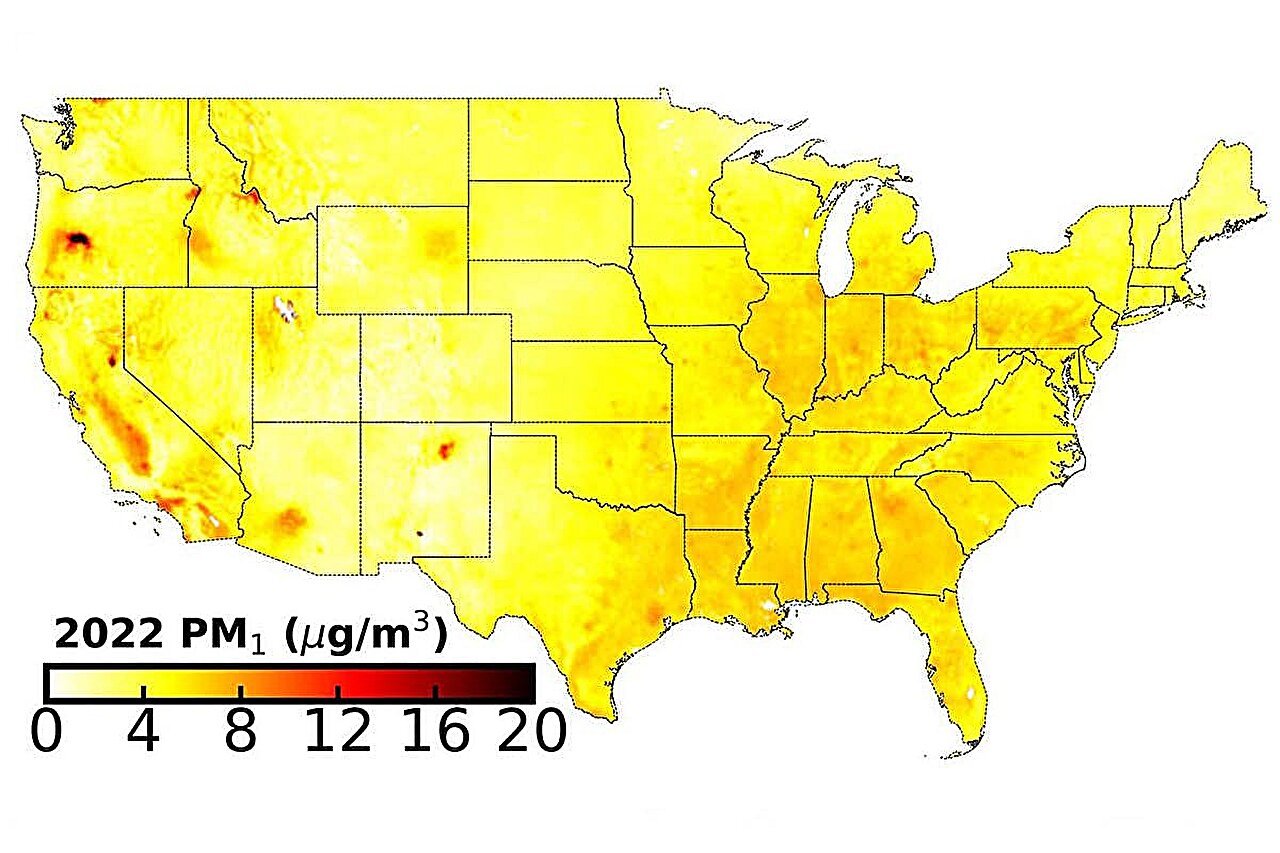
Air pollution causes health problems and is attributable to some 50,000 annual deaths in the United States, but not all air pollutants pack the same punch.
Scientists have tracked the scope of “PM 2.5” pollution over decades. PM 2.5 is a size of “particulate matter” that is less than 2.5 microns in diameter. But less information was available about its even tinier cousin, described as “submicron” or “PM 1” particulate matter, which is less than 1 micron in diameter. Why does that matter? Because the “little guys” might be the source of worse health effects.
With a study now published in The Lancet Planetary Health, researchers at Washington University in St. Louis have quantified the amount of PM 1 over the United States from the past 25 years.
“This measurement serves as a starting point to understand which pollutants regulators could target to make the most effective health impact,” said Randall Martin, the Raymond R. Tucker Distinguished Professor of energy, environmental and chemical engineering in the McKelvey School of Engineering. “This effort builds upon WashU’s strengths in satellite remote sensing and modeling atmospheric aerosols that were leveraged in this study,” he added.
Chi Li, research assistant professor in Martin’s atmospheric composition analysis group, is the first author of the work. Li said these estimates will enable further investigation into both the health and environmental effects of submicron particles.
Li said the very small particles quantified in this study generally come from direct air emissions, such as the black carbon particles released by diesel engines or the smoke from wildfires. Sometimes PM 1 can also form through secondary processes when sulfur dioxide or nitrogen oxides are spit out through fuel combustion and burning coal.
It makes intuitive sense that smaller particles of air pollution could do more damage to the human body because they are able to slip past the body’s innate defenses. These submicron particles are at least 6 times smaller than blood cells.
Air particles are not always one single thing, but mixtures of other materials stacked together.
The larger sizes of particles are critically more dominated by components that are not easily modifiable like mineral dust, noted Li.
The researchers were able to calculate their submicron estimates based on the known ratios of what makes up PM 2.5 particles, which include seven main components such as sulfate, nitrate and mineral dust.
“Putting the seven species together, we can calculate the total PM 1 concentration over the country,” Li said.
This research sets the stage for further analysis of where, how and why certain types of particles congregate, and how they can affect the environment and human body.
“When EPA first promulgated a fine PM air quality standard in 1997, there was considerable discussion about regulating PM 1 or PM2.5,” said Jay Turner, the James McKelvey Professor of Engineering Education and co-author on the study. “For numerous reasons, including but not limited to the lack of health impacts studies for PM 1 compared to studies for PM 2.5, the latter was chosen. This study provides a comprehensive, nationwide dataset to examine PM1 impacts on health.”
A next step will involve working with epidemiologists to assess the association of PM 1 with health outcomes.
The new dataset revealed another notable fact: pollution regulation does help. Across the contiguous U.S., average PM 1 levels in the air people breathe dropped sharply from 1998 to 2022, thanks to decades of environmental regulations like the Clean Air Act. However, this progress has slowed since 2010, mainly because of rising wildfire activity. Future pollution controls will need to address emerging, non-fossil fuel sources, study authors said.
Other countries like China have a head start tracking nationwide PM 1, but now the U.S. can quickly catch up.
“This dataset offers unprecedented information for the United States about an important pollutant for which few other measurements exist,” Martin said.
More information:
Chi Li et al, Estimates of submicron particulate matter (PM1) concentrations for 1998–2022 across the contiguous USA: leveraging measurements of PM1 with nationwide PM2·5 component data, The Lancet Planetary Health (2025). DOI: 10.1016/S2542-5196(25)00094-4
Provided by
Washington University in St. Louis
Citation:
Tiny and toxic: Researchers track smaller air pollution particles across US skies (2025, June 14)
retrieved 15 June 2025
from https://phys.org/news/2025-06-tiny-toxic-track-smaller-air.html
This document is subject to copyright. Apart from any fair dealing for the purpose of private study or research, no
part may be reproduced without the written permission. The content is provided for information purposes only.




